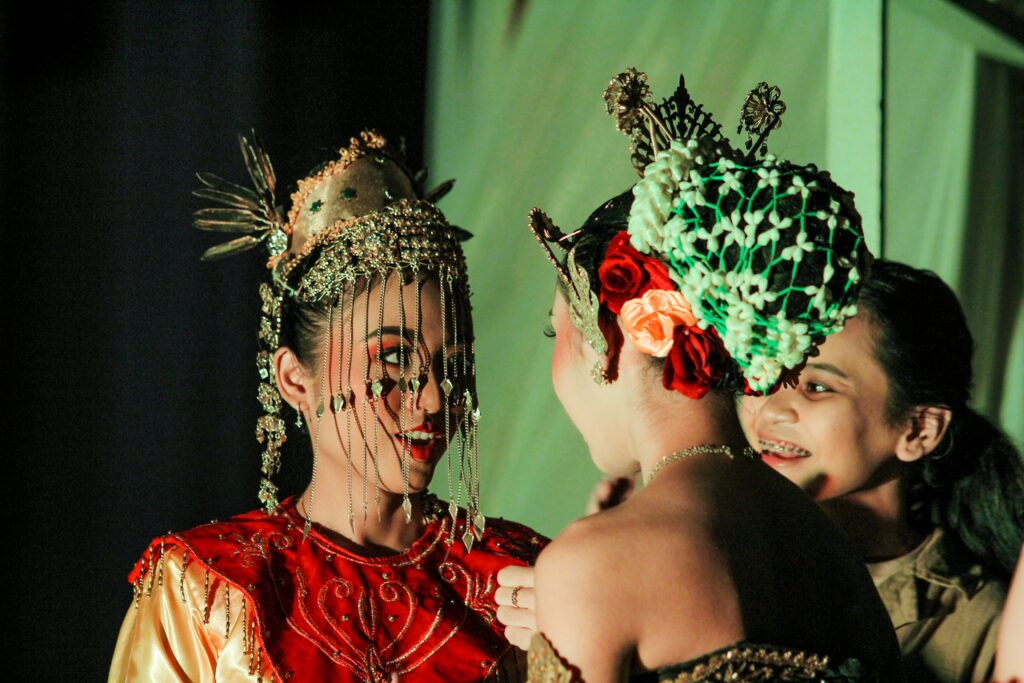In a world where the concepts of race, ethnicity, and nationality intertwine in the tapestry of human identity, understanding the distinctions and connections between them is more than an academic exercise—it’s a journey into the heart of what makes us who we are. This blog post aims to explore these concepts, not just as dry, academic terms, but as living, breathing aspects of our identities that shape our experiences, our perspectives, and our place in the world.
Chimamanda Ngozi Adichie, in her profound work “Americanah,” touches on the elusive nature of race, especially for those who have never felt its barriers: “Race doesn’t really exist for you because it has never been a barrier. Black folks don’t have that choice.” This statement opens a window into the reality that race, often perceived as a biological given, is in fact a social construct with tangible impacts on those it marks.
Similarly, Aisha Thomas, in “Representation Matters: Becoming an anti-racist educator,” challenges the narrow perceptions of ethnicity, which is often mistakenly associated exclusively with People of Colour. She argues that ethnicity encompasses a broader spectrum, including various groups within the White population, like Cornish ethnicity. This perspective invites us to consider ethnicity as a complex intersection of identity factors, transcending mere racial categorizations.
Ellen Johnson Sirleaf, with her insightful words, reminds us that ethnicity should be a source of richness and diversity, not division: “Ethnicity should enrich us; it should make us a unique people in our diversity and not be used to divide us.” This view encourages us to embrace the mosaic of human experience that ethnicity represents, celebrating it as a unifying rather than a segregating force.
On the other hand, Franklin D. Roosevelt’s reflection on nationality speaks to the collective identity that binds diverse groups: “We are a nation of many nationalities, many races, many religions bound together by a single unity, the unity of freedom and equality.” His words underscore the idea that nationality often conflated with ethnicity or race, is actually a civic concept rooted in shared values and political ties.
Contrastingly, Dov Davidoff offers a critical perspective on the concept of national pride: “Being proud of your nationality is like congratulating yourself for inheriting money.” This provocative thought challenges us to question the basis of our national pride and to consider the arbitrary nature of the circumstances of our birth.
In this blog post, we will delve into these nuanced and often misunderstood concepts. We will explore how race, ethnicity, and nationality, while distinct, are interconnected in shaping our identities and experiences. Through a balanced and practical approach, we aim to provide thought-provoking information that not only informs but also encourages reflection on these critical aspects of our human experience.
Join us on this enlightening journey, as we seek to understand the layers of meaning behind race, ethnicity, and nationality, and how they play a pivotal role in our lives and societies.
Importance of Understanding Differences
Understanding the differences between race, ethnicity, and nationality is crucial in today’s interconnected yet divided world. This understanding impacts interpersonal relationships, teamwork, and societal interactions. Here are key reasons why this understanding is significant:
Fostering Empathy and Respect: Understanding race, ethnicity, and nationality helps us empathize with others’ perspectives, leading to more respectful and inclusive interactions. It breaks down barriers of misunderstanding and prejudice.
Facilitating Effective Communication: In a globalized world, effective communication across cultural and linguistic boundaries is essential. Understanding different communication styles and cultural norms helps avoid misunderstandings and enables more meaningful exchanges, particularly in multicultural settings.
Enhancing Problem-Solving and Decision-Making: Diverse perspectives, informed by different racial, ethnic, and national backgrounds, bring varied ideas and insights. Valuing these differences enhances problem-solving and decision-making, leading to more innovative and inclusive solutions.
Building Inclusive Environments: Creating inclusive environments requires more than tolerating diversity; it involves actively recognizing and addressing biases and stereotypes. Understanding race, ethnicity, and nationality is key to creating spaces where everyone feels valued and included, which is vital in workplaces, educational institutions, and communities for better engagement and productivity.
What is Race?

Understanding race is key to distinguishing it from ethnicity and nationality.
Biological Basis: Traditionally, race categorizes people based on physical traits like skin color, facial features, and hair texture, suggesting distinct human races. However, this view is increasingly contested. Geneticist Richard Lewontin stated, “The vast majority of all human variation lies within so-called races, not between them.” This challenges the notion of distinct biological races, highlighting greater genetic diversity within these groups than between them, and underscores our shared humanity.
Social Construct: Race is also seen as a social construct, a system shaped by society that assigns meaning to physical traits, often reinforcing inequalities. Influenced by history and societal factors like colonization, slavery, and discrimination, race’s social aspect is well-captured by James Baldwin: “Race is a social construct, not a biological truth.” This view focuses on how societies interpret and value physical traits, impacting social identity, power dynamics, and access to resources.
Our understanding of race is evolving. It’s not just about categorizing people but understanding the impact of these categories on lives and experiences.
What is Ethnicity?

Ethnicity is more than cultural identity; it’s a rich blend of shared history, language, traditions, and often, geographic roots. It signifies belonging to a group with diverse experiences yet a unified collective memory that influences its worldview.
Cultural Identity: Ethnicity is fundamentally about shared cultural identity, including customs, language, religion, values, and historical narratives. It’s the essence of a group’s collective spirit, passed down across generations. Aisha Thomas highlights that ethnicity encompasses groups sharing multiple identity aspects, extending beyond racial categories to include varied experiences within any group.
Shared Traditions: The defining rituals and customs of an ethnic group are central to its identity. These traditions, from celebrations and cuisine to clothing and art, are more than mere practices; they carry the stories and meanings of the group, manifesting its collective memory and identity.
Ellen Johnson Sirleaf’s view on ethnicity underscores its unifying potential: “Ethnicity should enrich us; it should make us a unique people in our diversity and not be used to divide us.” This perspective sees ethnicity as a source of diversity and unity, not division.
Ethnicity, thus, is a complex and dynamic concept, deeply rooted in shared cultural elements and collective experiences, shaping the unique contributions of each group to the world’s cultural mosaic.
What is Nationality?

Nationality: A Multidimensional Concept
Legal and Political Affiliation: Nationality is a legal bond between an individual and a state, granting rights like voting and work, alongside responsibilities such as obeying laws and paying taxes. The criteria for nationality vary globally, often based on birthplace or ancestry. For example, being born in the U.S. grants American nationality, while German nationality traditionally depends on German parentage. The process of acquiring nationality can vary significantly from country to country, often based on jus soli (right of soil) or jus sanguinis (right of blood). For instance, someone born in the United States automatically acquires American nationality, illustrating jus soli. In contrast, Germany traditionally followed jus sanguinis, where German nationality was inherited from German parents.
Geographic Identity: Nationality also reflects a connection to a specific geographic region, encompassing shared history, culture, language, and governance. It fosters a collective identity, uniting diverse groups. Franklin D. Roosevelt’s words, “We are a nation of many nationalities, many races, many religions bound together by a single unity, the unity of freedom and equality,” highlight how nationality can unify diverse groups under shared values.
Philosophical and Ideological Perspectives:
Nationality has sparked philosophical debates. Nationalism emphasizes loyalty to one’s nation and self-governance but can be criticized for excluding non-nationals. In contrast, cosmopolitanism advocates global citizenship, prioritizing universal human rights and collective global responsibility. This view aligns with Immanuel Kant’s vision of a cosmopolitan existence based on shared humanity, transcending national boundaries.
Historical Context
Evolution of the Concept of Race
Race has evolved from ancient beliefs based on physical appearance to complex social constructs. Initially, races were classified and ranked based on physical traits. Franz Boas, a modern anthropology pioneer, famously noted, “There is no fundamental difference between the races.“
During the era of scientific exploration and colonialism, race became linked with pseudoscientific theories, leading to the rise of scientific racism and beliefs in racial superiority and inferiority. Charles Darwin later criticized this, highlighting human commonality.
Today, race is understood as a social construct rather than a biological reality, with significant societal implications. Eduardo Bonilla-Silva describes it as “Race is not a biological reality but a social fiction.”
Ethnicity Across History
Ethnicity’s history is marked by conflicts and identity movements. Conflicts often arose from cultural, religious, or political differences, driven by competing interests or manipulation of ethnic identities. Kwame Anthony Appiah notes that ethnicity can be a source of both pride and pain.
Movements advocating for ethnic rights and recognition have emerged in response to marginalization and cultural preservation. Aisha Thomas emphasizes this in “Representation Matters.”
Shaping of National Identities
Colonialism and independence movements have significantly shaped national identities. Colonialism merged indigenous cultures with colonizers’, creating unique national identities. Frantz Fanon explored this complex legacy in “The Wretched of the Earth.”
Independence movements sought to reclaim suppressed cultural, political, and national identities. Jomo Kenyatta, Kenya’s first president, encapsulated this sentiment: “Our children may learn about the heroes of the past. Our task is to make ourselves architects of the future.”
Race vs. Ethnicity: Understanding the Distinctions and Intersections
Distinctions
Biological vs. Cultural: Race is commonly linked to biological attributes, such as physical traits and ancestry. However, this view is increasingly challenged. Philosopher Kwame Anthony Appiah, in “In My Father’s House,” highlights that scientific research shows more genetic variation within racial groups than between them. Ethnicity, in contrast, centers on cultural elements like traditions, customs, languages, and values. Stuart Hall describes it as encompassing “the cultural practices and shared understandings significant to a group or society.”
Inherited vs. Chosen: Race is often viewed as an inherited trait, passed down through generations. Ethnicity, however, can be a chosen identity, influenced by cultural background and affiliations. Amin Maalouf in “In the Name of Identity: Violence and the Need to Belong,” emphasizes that while some identity aspects are inherited, others are shaped by cultural experiences and choices.
Intersectionality
Overlapping Identities: Kimberlé Crenshaw’s concept of intersectionality is essential for understanding the interconnectedness of race and ethnicity. Individuals often have multiple racial and ethnic identities, influenced by their gender, sexuality, religion, and socioeconomic status. These intersecting identities shape experiences and perspectives. Audre Lorde’s statement, “There is no such thing as a single-issue struggle because we do not live single-issue lives,” reinforces this idea.
Complex Identity Formation: Intersectionality also sheds light on the complexity of identity formation. It recognizes that various social categories, including race and ethnicity, significantly impact individual experiences. W.E.B. Du Bois’s idea of “double consciousness” further illustrates this, describing the internal conflict faced by marginalized groups in society.
Ethnicity vs. Nationality: Unraveling Our Identity
Ever wondered how ethnicity and nationality shape who we are? These terms, often used interchangeably, have distinct meanings that deeply impact our identity. Let’s explore these differences and what they mean for us.
Defining Characteristics
Cultural Heritage vs. Legal Affiliation: Ethnicity reflects a group’s cultural heritage, including customs, traditions, languages, and values. It’s like a family recipe, each ingredient a part of your cultural story. Nationality, however, is your legal connection to a country, defined by laws and political boundaries. It’s about where you belong in the world, not necessarily who you are.
Voluntary vs. Involuntary: You can choose your ethnicity, embracing the cultural background that feels right to you. Nationality is usually assigned at birth, based on birthplace, ancestry, or legal processes. It’s like a uniform you’re given, representing your country of origin.
Multiple Affiliations
Dual Ethnicity and Nationality: Some people identify with two ethnic groups or hold legal ties to more than one country. This dual identity can offer a richer, more diverse perspective on life.
Navigating Identity Conflicts: Balancing multiple ethnic or national affiliations can be challenging. It involves reconciling different cultural, social, or legal expectations. W.E.B. Du Bois described this as “double consciousness,” the struggle to see oneself through others’ eyes while staying true to your identity.
Race vs. Nationality: Exploring Key Examples
Immigration and National Identity: Immigrants often face the challenge of merging their racial identity with a new national identity. Chimamanda Ngozi Adichie captures this with her words: “The only reason race matters is because of racism.” Immigrants must balance preserving their racial and ethnic heritage with assimilating into their new country’s culture. This can lead to a complex but enriching sense of belonging.
Ethnic Enclaves in National Contexts: Places like Chinatowns or Little Italy show how ethnic groups maintain their identity within a larger national context. These areas are cultural hubs where traditions and languages flourish within the national culture. They exemplify philosopher Kwame Anthony Appiah’s idea of “cosmopolitanism” – the belief that all humans are part of a single community. These enclaves highlight the coexistence and interaction of diverse ethnic identities within a nation.
Challenges and Stereotypes: Understanding the Differences
Racial Profiling vs. National Origin: It’s important to distinguish between racial profiling and national origin. Racial profiling is discrimination based on perceived race, often leading to biases and systemic issues. In contrast, national origin refers to a person’s birthplace or ancestral homeland. Franklin D. Roosevelt’s words resonate here: “Whoever seeks to set one nationality against another, seeks to degrade all nationalities.” This highlights the harm in using national origin as a basis for prejudice.
The Fluid Nature of Identity: Navigating Change
Understanding race, ethnicity, and nationality requires recognizing their dynamic nature. These aspects of identity change over time, influenced by various experiences.
Identity Shift Over Time
James Baldwin once said, “Know from whence you came. If you know whence you came, there are absolutely no limitations to where you can go.” This highlights how identity evolves. As people move through life, their views on race and nationality can change. Education broadens perspectives, and personal growth alters how we see and express our identities. This change is both personal and societal.
Acculturation and Assimilation
Acculturation involves adopting new cultural elements while keeping some from one’s original culture. Assimilation means fully adopting the norms and practices of a new culture. These processes significantly affect how people view and express their racial and national identities. Cultural anthropologist Ruth Benedict said, “The purpose of anthropology is to make the world safe for human differences,” emphasizing the adaptability of humans.
Cultural Appropriation
Cultural appropriation is adopting elements from another culture, often without understanding or respect. This can create power imbalances and commodify cultural traditions. Zadie Smith described culture as “a palimpsest, endlessly rewritten, added to, subtracted from,” showing its complexity.
Cultural appropriation affects both the appropriated and appropriated cultures. It can undermine the authenticity of cultural expressions, reinforce stereotypes, and reduce the significance of cultural practices. It also leads to a shallow engagement with cultural diversity.
Societal Implications
Race, nationality, and the fluidity of identity have significant implications for society:
Social Inequality and Discrimination: Racial and national identities intersect with social structures, giving rise to systemic inequalities and discrimination. Understanding these dynamics is crucial for addressing social justice issues and promoting equality.
Cultural Diversity and Integration: Recognizing and valuing diverse racial and national identities fosters a more inclusive and dynamic society. Encouraging cultural exchange, respect, and integration contributes to social cohesion and enriches communities.
Societal Implications: Discrimination and Prejudice
Race and ethnicity significantly influence societal dynamics, often leading to discrimination and prejudice:
Racism: This form of oppression, based on race, results in unequal treatment and social injustices. Martin Luther King Jr. highlighted its pervasive nature: “Injustice anywhere is a threat to justice everywhere.” Racism extends beyond individual prejudice, affecting various societal sectors, including employment and law enforcement.
Ethnocentrism: This is the belief in the superiority of one’s own ethnic group. Anthropologist Franz Boas advocated for cultural relativism, the understanding that all cultures have equal value. Ethnocentrism can lead to stereotypes and marginalization, ignoring the worth of diverse cultures.
Legal and Policy Ramifications
Race and ethnicity also shape legal and policy decisions:
Anti-Discrimination Laws: These laws protect against unfair treatment based on race or ethnicity. Nelson Mandela’s words resonate here: “No one is born hating another person because of the color of his skin, or his background, or his religion.” These laws work to eliminate biases that cause racial profiling and discrimination in employment and housing.
Immigration Policies: The interplay of race, ethnicity, and immigration is complex. These policies can significantly affect the lives of individuals and families. Philosopher Kwame Anthony Appiah observed that societies evolve: “Cultures are made of continuities and changes.” Inclusive policies that acknowledge this can foster more equitable societies.
Diversity and Inclusion
Understanding the role of diversity and inclusion is essential in the context of race, ethnicity, and nationality. Diversity enriches society, fostering creativity, innovation, and unity. Audre Lorde’s words resonate here: “It is not our differences that divide us. It is our inability to recognize, accept, and celebrate those differences.”
Promoting Diversity
A diverse society brings together a variety of perspectives, knowledge, and experiences. Celebrating racial and ethnic differences fosters respect, inclusion, and empowerment. It encourages cultural exchange and mutual understanding. Maya Angelou captured this beautifully: “In diversity there is beauty and there is strength.”
Fostering Inclusion
Inclusion complements diversity. It’s about creating spaces where everyone, regardless of race, ethnicity, or nationality, feels welcome and valued. This means not only promoting diversity in various settings but also addressing biases and stereotypes. Verna Myers puts it succinctly: “Diversity is being invited to the party; inclusion is being asked to dance.”
Education and Awareness
Education is key to fostering inclusion. It involves challenging stereotypes and prejudices and raising awareness about the experiences and contributions of different groups. Nelson Mandela’s view highlights this: “Education is the most powerful weapon which you can use to change the world.”
Case Studies
Notable Historical Events
Understanding the intersection of race, nationality, and identity becomes clearer through historical events:
Civil Rights Movement: In the 1950s and 1960s, the Civil Rights Movement in the United States marked a significant struggle against racial segregation and discrimination. Leaders like Martin Luther King Jr., with his “I have a dream” speech, and Rosa Parks, through her act of defiance, led protests for equal rights. Their efforts not only challenged systemic racism but also reshaped American identity.
Genocides: The Holocaust in World War II and the Rwandan genocide in 1994 are stark reminders of the dangers of racial and ethnic hatred. These genocides, involving mass persecution and killing of specific groups, underscore the need to address racial and ethnic tensions. Philosopher Hannah Arendt’s concept of the “banality of evil” suggests that ordinary people can participate in terrible acts when they stop questioning their actions’ morality.
Modern-Day Examples
Current issues further illustrate the complexities of race, nationality, and identity:
Immigration Debates: Immigration discussions in countries like the United States, Europe, and Australia often revolve around race, nationality, and policy. These debates question national identity, cultural integration, and how immigrants are treated based on their backgrounds. Sociologist Stuart Hall described identity as an ongoing ‘production’, highlighting its evolving nature.
Cultural Revival Movements: Efforts to revive Indigenous cultures and traditions represent attempts to reclaim and celebrate marginalized identities. These movements, addressing historical oppression and preserving heritage, aim for a more inclusive national identity. They align with Frantz Fanon’s views on the importance of cultural resistance to colonialism.
Intersectionality and Identity Politics
Understanding the interplay of gender, race, and ethnicity is key to grasping identity. Kimberlé Crenshaw, who coined the term intersectionality, explains it as a way to see how different aspects of a person’s identity can lead to unique forms of discrimination and privilege. In her words, “Intersectionality is a lens through which you can see where power comes and collides, where it interlocks and intersects.”
Intersection of Gender, Race, and Ethnicity: Nationality, defined by birth, ancestry, or legal status, is just one aspect of identity. More importantly, the combination of gender, race, and ethnicity can lead to distinct challenges for individuals. Audre Lorde, a feminist and civil rights activist, captures this complexity: “There is no such thing as a single-issue struggle because we do not live single-issue lives.”
Identity Politics in Gender Movements: In gender movements like feminism and LGBTQ+ advocacy, identity politics plays a crucial role. It’s about rallying around shared characteristics, such as gender, to address the unique challenges faced by marginalized groups. This approach acknowledges that the fight for gender equality varies significantly across different races and ethnicities.
Political Implications
Identity and politics intersect significantly, affecting representation and activism:
Representation in Politics: Effective representation means ensuring voices from diverse racial, ethnic, and gender backgrounds are heard in decision-making. This diversity enriches perspectives. Barack Obama once said, “We may have different stories, but we hold common hopes; we may not look the same and we may not have come from the same place, but we all want to move in the same direction.”
Political Activism and Identity: Identity is a driving force in political activism. Activists often unite around shared identities like race, ethnicity, or gender to fight systemic inequalities and push for inclusivity and policy reforms. Angela Davis, an activist, puts it succinctly: “I am no longer accepting the things I cannot change. I am changing the things I cannot accept.” This statement embodies the spirit of identity-based activism: striving to reshape society to better reflect its diverse members.
Frequently Asked Questions (FAQs)
What is the fundamental difference between race, ethnicity, and nationality?
The concepts of race, ethnicity, and nationality are often used interchangeably, but they have distinct meanings:
Race: Race primarily refers to physical characteristics passed down from generation to generation. These characteristics can include skin color, facial features, hair texture, and bone structure. It’s important to note that race is a social construct, not a biological fact. This means that societies form racial categories based on perceived physical differences, and these categories can change over time and vary between cultures.
Ethnicity: Ethnicity, on the other hand, is about cultural identity and heritage. It encompasses a range of factors including language, traditions, religion, and cultural practices. People of the same ethnicity can share a common ancestral background, history, or homeland. Ethnicity is about the learned cultural behaviors celebrated throughout regions and nations.
Nationality: Nationality is a legal relationship between an individual and a country or nation. It usually indicates where a person was born and/or holds citizenship. Nationality is often associated with legal rights, duties, and a sense of belonging to a specific nation-state. It’s important to recognize that nationality doesn’t necessarily dictate one’s ethnic or racial identity.
Can an individual identify with multiple races, ethnicities, or nationalities?
Yes, individuals can indeed identify with multiple races, ethnicities, or nationalities, especially when they have diverse ancestral or cultural backgrounds. This multifaceted identity is increasingly common in our globalized world, where the movement of people and intercultural connections are more prevalent than ever.
Race: Race is often considered a social construct rather than a biological fact. It’s about how society categorizes people based on perceived physical characteristics. Someone with parents of different racial backgrounds, for example, may identify with multiple races.
Ethnicity: Ethnicity relates more to cultural expression and identification. It encompasses language, culture, and traditions. People can identify with multiple ethnicities if they have been raised in or deeply influenced by different cultural traditions.
Nationality: Nationality is usually linked to legal citizenship and the country one identifies with. It’s possible for individuals to have multiple nationalities, either by birth, naturalization or through holding dual citizenship.
It’s important to recognize that identity is deeply personal and fluid. How one chooses to identify can be influenced by various factors, including family heritage, personal experience, and societal context. In a multicultural society, the blending of races, ethnicities, and nationalities is not just a possibility but a reality for many, enriching the tapestry of individual and collective identities.
Conclusion
As we come to the end of our exploration into the intricate world of race, ethnicity, and nationality, it’s clear that trying to neatly categorize human identity is like trying to sort a kaleidoscope by color – a beautiful, if somewhat futile, endeavor. Our journey through these concepts has been less like drawing lines on a map and more like tracing the veins of a leaf, revealing a network of interconnected pathways that make up the whole.
In this global village, where the world is both vast and intimately connected, our identities are not just passports stamped with the ink of race, ethnicity, or nationality. They are living, breathing stories, each unique and yet part of a larger narrative. We are a tapestry woven from threads of history, culture, and personal experience, a rich mosaic where every piece is essential to the complete picture.
Race, a social construct often mistaken for a biological certainty, reminds us that what we see on the surface is just a fraction of the story. Ethnicity, with its symphony of language, tradition, and heritage, teaches us that our roots run deep and wide, nourishing the tree of our identity. Nationality, the legal bond tying us to a patch of earth, a flag, a people, reminds us that while borders may define countries, they need not define us.
In a world where you can be anything, the most revolutionary act is to be yourself. As we navigate the complexities of who we are, let’s remember the words of Maya Angelou, “In diversity there is beauty and there is strength.” Our differences are not just lines that divide; they are colors that paint the canvas of humanity in vibrant hues.
So, as we close this chapter, let’s not seek to erase our differences but to embrace them, to learn from them, and to celebrate them. For in understanding race, ethnicity, and nationality, we don’t just understand the world better; we understand each other better. And in that understanding, we find not just tolerance, but joy in the diversity that makes us uniquely, wonderfully, human.
In the end, we are all just travelers on this journey of identity, each with our own story, each with our own path, but all under the same vast sky. Let’s walk this path with curiosity, empathy, and a sense of wonder, for the journey is long, but the journey is beautiful.







































